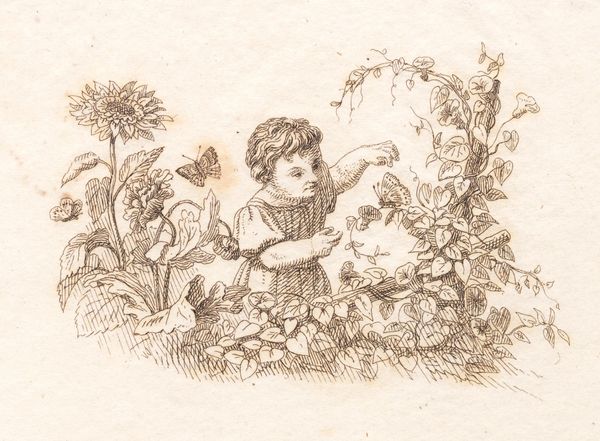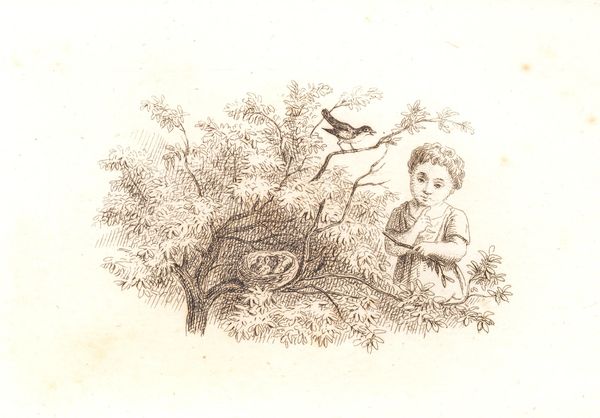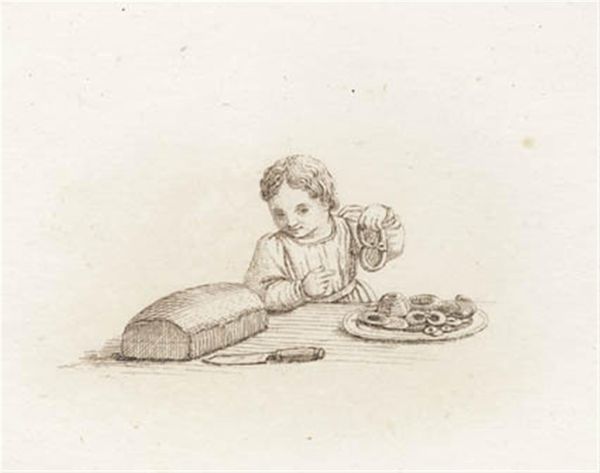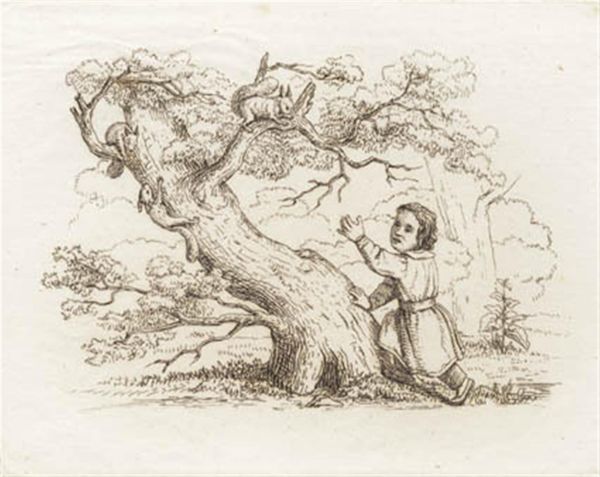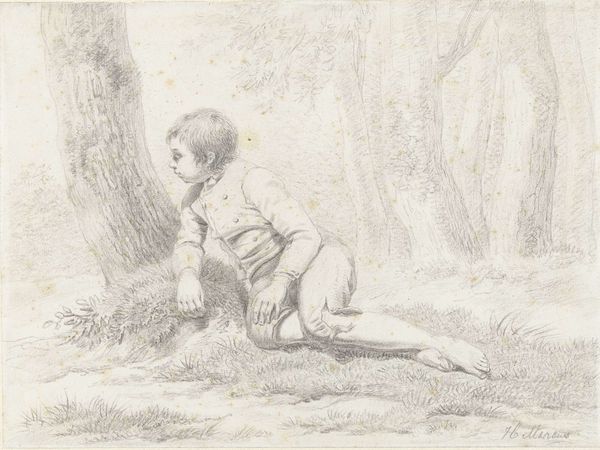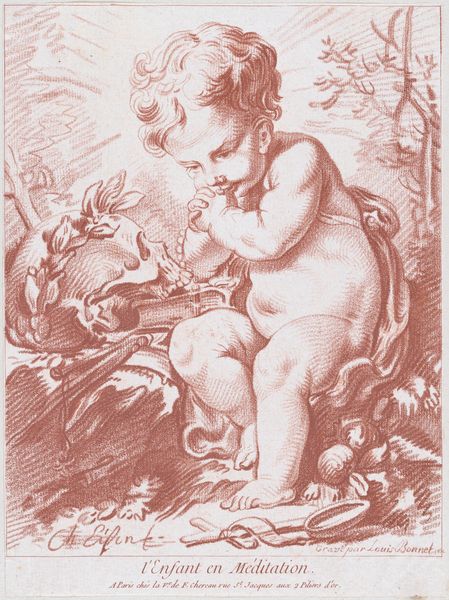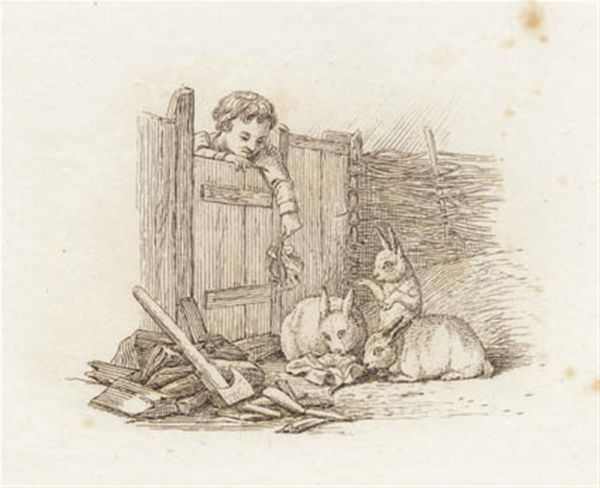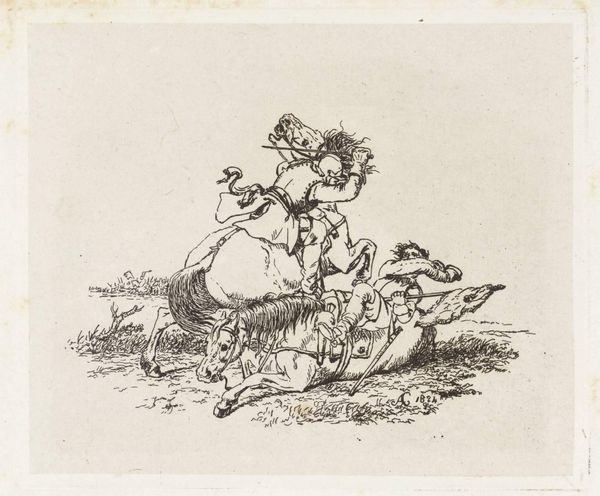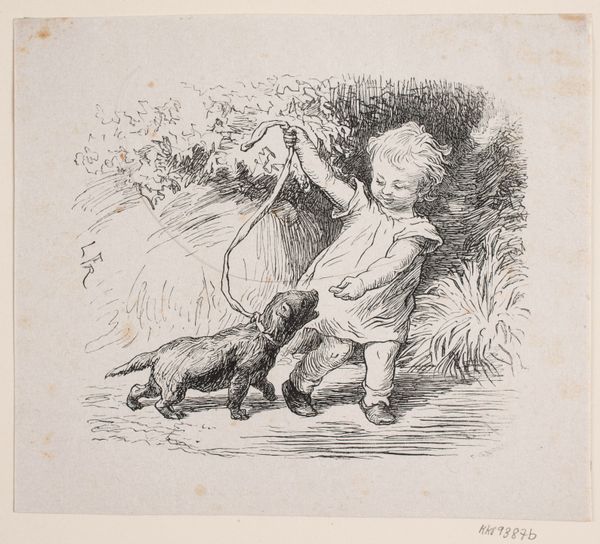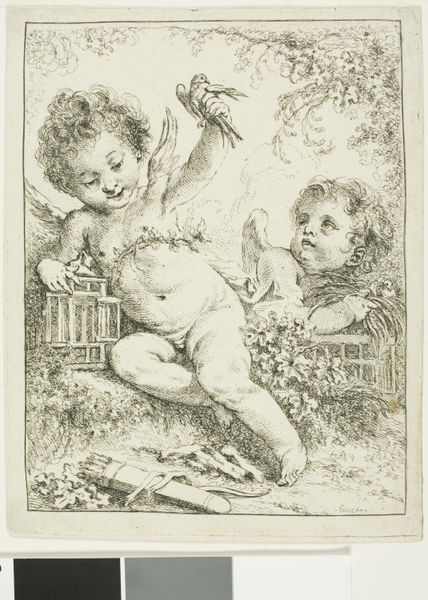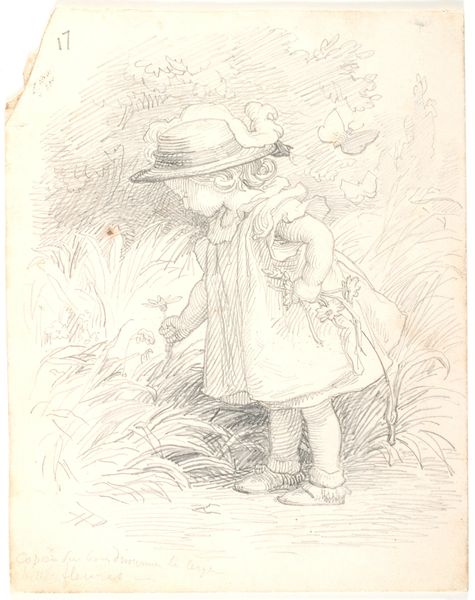
Illustration til "Halvhundrede Fabler for Børn" af Hey 1834
0:00
0:00
drawing, print, ink, engraving
#
portrait
#
drawing
#
narrative-art
# print
#
ink
#
romanticism
#
genre-painting
#
engraving
#
miniature
Dimensions: 140 mm (height) x 259 mm (width) (bladmaal)
Curator: Looking at this, I’m immediately struck by its delicate, dreamlike quality. Editor: Agreed. The technique is beautiful. We’re looking at "Illustration til \"Halvhundrede Fabler for Børn\" af Hey"—it’s a drawing created around 1834 by Martinus Rørbye. It's currently held at the SMK, Statens Museum for Kunst. Curator: Rørbye was definitely part of the Romanticism movement. One of the amazing qualities of Romanticism is its way of reflecting on childhood as a golden age. Editor: And isn’t there something eternally charming about these detailed line engravings? This print—presumably meant to illustrate a children's fable—possesses an incredibly tender, nostalgic atmosphere, like looking at something through gauze. There's a tiny human being interacting with nature, amidst lush flowers and butterflies. It hints at secret gardens, imagination, and innocence, a world apart. Curator: The piece uses a lot of familiar Romantic themes: the beauty of nature, childhood innocence, the human relationship to the natural world. But given the book was for children, it makes sense that it portrays childhood so fondly. Think of the tradition of fairy tales, folklore, where you’d want children to learn lessons that could often only be learned in a magical world. Editor: Absolutely, and I notice that it's not only thematically consistent, but even formally in keeping with those qualities—with its diminutive size, and painstaking level of fine detail, inviting the viewer into the magic, tiny world within it. It looks like a snapshot of paradise through the eyes of a kid, or for a kid. Curator: It speaks volumes, too, about the rise of children’s literature at the time. There’s a burgeoning middle class with increasing access to printed materials. It suggests childhood was becoming valorized in a way it hadn’t been before, right? And that art should be part of cultivating a child’s intellectual and moral development. Editor: Precisely. Thinking of our present context—considering where the piece comes from—certainly adds resonance to that little person reaching for a butterfly. Now, seeing Rørbye's intent within this broader framework gives this delicate piece a richer, deeper meaning. Curator: I concur, and it reminds me how powerful visual imagery has always been in shaping how we perceive the world, even from such a young age.
Comments
No comments
Be the first to comment and join the conversation on the ultimate creative platform.

